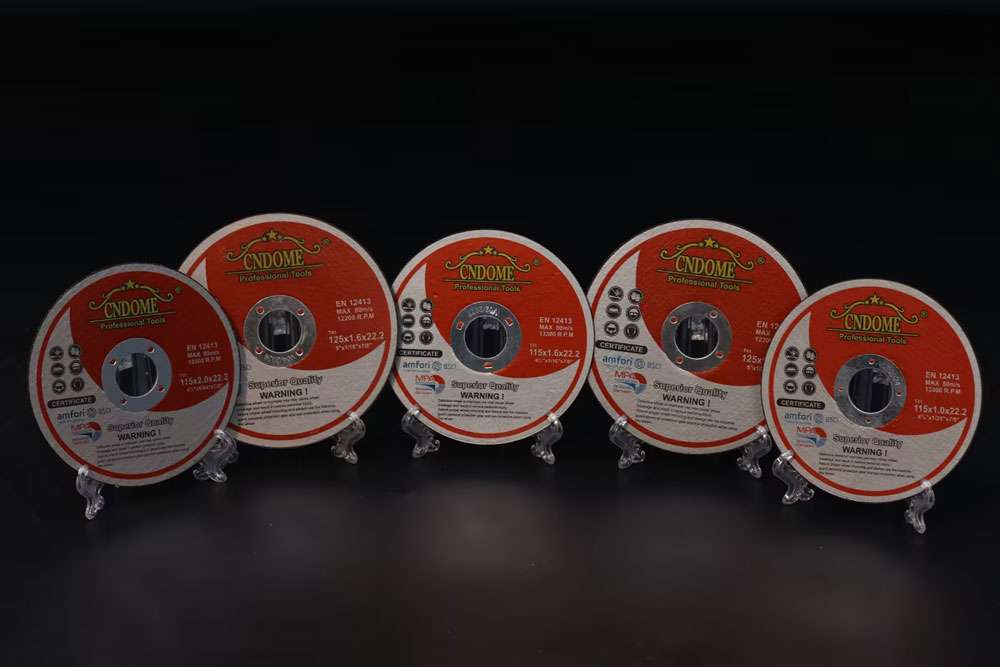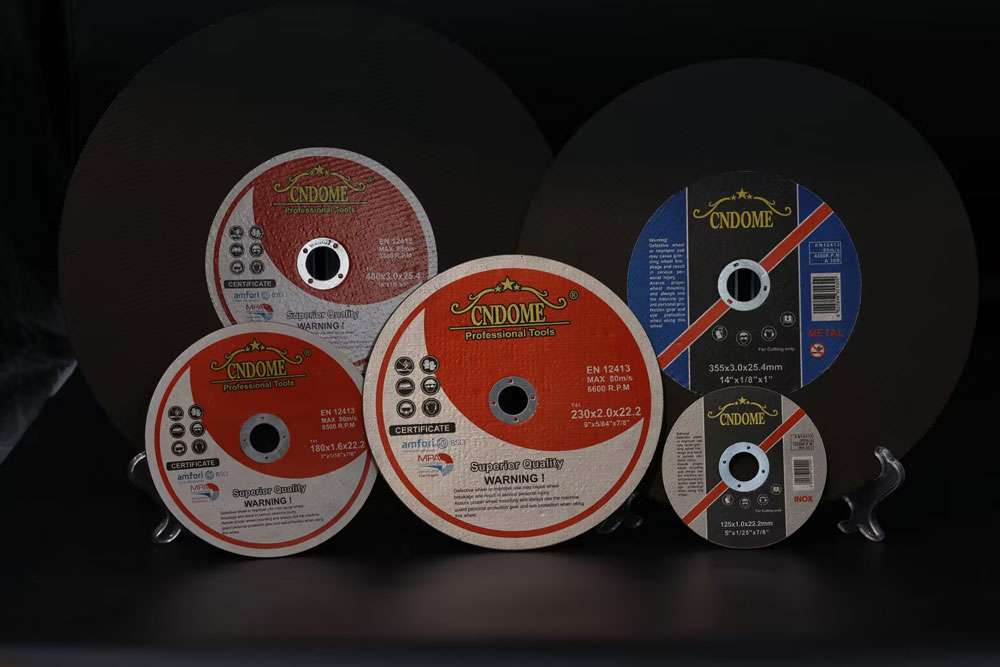When working with stainless steel (commonly referred to as inox), choosing the right cutting discs is essential for achieving clean, efficient cuts. Stainless steel is a tough and durable material, but it requires specific tools to ensure both the quality of the cut and the longevity of your disc. In this guide, we will explore the key factors you need to consider when selecting cutting discs for inox, as well as best practices for using it.
Why Use a Specialized Cutting Disc for Inox?
Inox, or stainless steel, contains chromium, which gives it its corrosion-resistant properties. However, this also makes it harder to cut compared to mild steel or other metals. Regular cutting disc, especially those designed for mild steel, can wear out quickly when used on inox. They may also generate excessive heat, which can affect the integrity of the stainless steel, leading to discoloration or even warping.
Specialized cutting discs for inox are made from high-quality materials that are designed to resist the wear and heat buildup caused by cutting stainless steel. These discs ensure a cleaner, faster cut and help preserve the quality of the inox material.
Key Features of Cutting Discs for Inox
1. Material Composition
Inox cutting discs are often made with premium abrasives such as aluminum oxide or zirconia alumina. These materials provide superior cutting performance and longevity when working with hard metals like stainless steel.
2. Free of Iron, Sulfur, and Chlorine
Cutting discs for inox are designed to be free of iron, sulfur, and chlorine, which can cause contamination of the stainless steel. Contaminants can lead to corrosion, undermining the very purpose of using stainless steel in the first place. Therefore, it’s important to choose discs labeled as “inox safe” or “contaminant-free.”
3. Thickness
Thinner cutting discs, typically around 1.0mm to 1.6mm, are ideal for cutting inox. They offer precision cuts, minimize material loss, and reduce heat generation. Thicker discs may last longer but can generate more friction, which increases the risk of discoloration or distortion of the stainless steel.
4. Heat-Resistant Bonding
The bonding resin in inox cutting disc is often formulated to withstand higher temperatures. This helps reduce heat buildup, preventing material damage and extending the disc’s service life.
Best Practices for Using Cutting Discs on Inox
1. Choose the Right Disc Size
The most common sizes for inox cutting discs are 4.5” (115mm), 5” (125mm), and 7” (180mm). The choice of size depends on the type of tool you’re using and the thickness of the stainless steel material. Always ensure your tool’s RPM rating matches the disc’s specifications for safety and efficiency.
2. Work at Proper Speed
Running your cutting disc at the right speed is crucial. A disc spinning too fast can overheat, while a slow disc may struggle to make clean cuts. Ensure your angle grinder or cutting machine is set at the recommended RPM for the disc you are using.
3. Avoid Excessive Pressure
Let the cutting disc do the work. Applying too much pressure can cause the disc to overheat, leading to premature wear or even breakage. Light, steady pressure will give you cleaner cuts and prolong the life of your disc.
4. Use Protective Equipment
Always wear proper safety gear, including goggles, gloves, and a face shield, when cutting inox. Sparks and metal shards can be hazardous, especially when working with harder metals like stainless steel.
5. Cool the Workpiece
Stainless steel is prone to heat buildup during cutting. To prevent material discoloration, use cooling techniques such as dipping the workpiece in water periodically or using a cooling spray.
Popular Applications for Inox Cutting Discs
- Fabrication: Cutting stainless steel sheets, pipes, and rods in metal fabrication workshops.
- Construction: Cutting inox components in structural engineering projects.
- Automotive and Aerospace: Precision cutting of stainless steel parts for high-performance applications.
- DIY Projects: Home-based projects requiring stainless steel materials, such as railing systems or decorative features.
Conclusion
Choosing the right cutting discs for inox is vital for achieving clean, efficient cuts without compromising the quality of your stainless steel material. By selecting discs specifically designed for inox, following best practices, and using the appropriate safety measures, you can ensure optimal performance and a longer tool life. Whether you’re a professional fabricator or a DIY enthusiast, investing in the right cutting discs will make your work easier and more effective.



